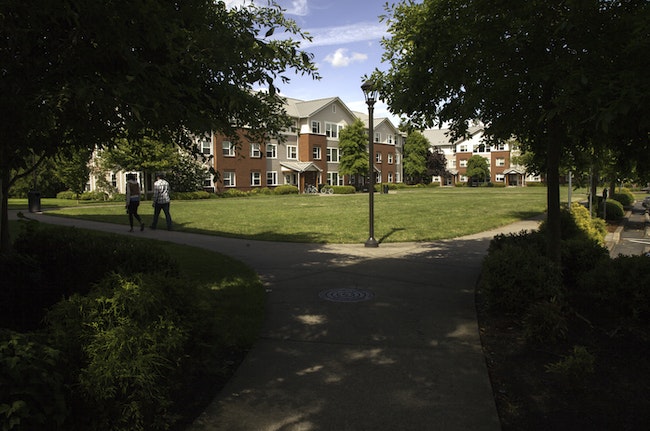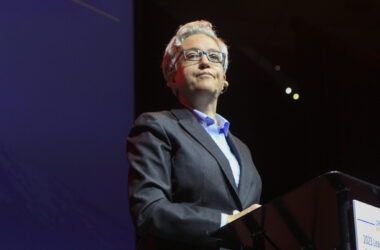Former students and faculty from nearly every one of Oregon’s seven public universities told lawmakers this week the state’s higher education system is broken, with students unable to afford housing, relying on Medicaid and food assistance and strapped with mounting debts.
They blamed the failures, in part, on two laws passed more than a decade ago that changed how Oregon’s public universities are governed. The laws gave universities and their boards greater power over budget decisions, while scaling back state regulation. A new proposal, House Bill 4125, would mandate a study of the university governance system and whether it and the state’s Higher Education Coordinating Commission, which is supposed to boost postsecondary access attainment, need to be overhauled. The proposal is sponsored by state Rep. Farrah Chaichi, D-Beaverton; Rep. Ben Bowman, D-Tigard; and state Sen. Chris Gorsek, D-Gresham.
“Since 2013, tuition and the resultant student debt to pay that tuition have exploded. An undue amount of this revenue has gone to fund ballooning upper administrative costs. Meanwhile, faculty and staff wages and working conditions have been greatly diminished in the last 10 years,” Victor Reyes told lawmakers at the House Committee on Higher Education on Tuesday evening. Reyes was an instructor at Oregon State University for a decade and is currently the executive director of the Oregon State Conference of the American Association of University Professors, representing 6,300 members at four universities in Oregon.
“I can say that many of our public universities are facing even greater challenges now than they were a decade ago, and the promise of institutional boards is not reflected in the actual impact that they have had on their individual institutions,” he said.
Ben Cannon, executive director of the state’s higher education commission since it began in 2013 and a former state representative who approved the system, said many of the problems blamed on the governing system existed before it was created.
“Many of the current concerns expressed here today, including, for example, increasing reliance on part-time faculty, rising tuition costs, are the continuation of long-standing trends in higher education in Oregon and nationally,” he told lawmakers. “In fact, they were the issues I heard about when I was running for the Legislature in 2006.”
Overhauling the system
In 2011, the state Legislature passed Senate Bill 242, which shifted governance of Oregon’s universities and community colleges from a hodgepodge of state education agencies to one – the Higher Education Coordinating Commission – to bring cohesion to the universities and community college system and to allow them to better collaborate. Two years later, with the passage of Senate Bill 270, governance over Oregon’s seven public universities went from the State Board of Education to the universities themselves. Governors and state legislators were allowed to appoint independent boards of regents and trustees to make fiduciary decisions at each university.
The promise, at the time, was to free university leaders from state regulations on choosing health insurance and infrastructure investments and to protect their tuition reserves from the Legislature, which had tapped those reserves to pay for other state programs. The promise for students and staff was that schools would have greater leverage to lower tuition costs, boost access, respond to new issues and include students and faculty in university operations in the spirit of transparency and accountability.
Instead, at the meeting Tuesday, current and former students and faculty described their universities as having gone from public institutions to private companies.
Alex Aghdaei, a political science student at the University of Oregon and chair of the executive committee of the nonprofit Oregon Student Association, said the university today compared to a decade ago is enrolling far fewer low-income students eligible for federal Pell grants and a smaller share of students from Oregon. Despite larger enrollment of higher-paying out-of-state students, and a growing donation fund reaching nearly $3 billion in assets, tuition has continued to increase.
“Where is this money going?” he asked lawmakers. “It is clear to students that the establishment of the decentralized and individual institutional board of trustees system at U of O has transitioned from acting as a public institution to one acting closer to a private enterprise.”
If passed, House Bill 4125 would direct the Legislative Policy and Research Office to conduct a study or contract with a company to conduct a study that would look at whether breaking up the statewide system into school-specific governing bodies has improved accountability and decision-making. It would also look at trends in tenure, tuition, student debt, enrollment and employment at Oregon’s public universities since 2013 and offer potential alternative governing models for public universities in this state.
Tuition increases
All seven of Oregon’s public universities increased tuition in 2023 in what’s become a regular pattern of annual increases in tuition during the last two decades.
The more than 78,000 full-time students at those universities cover at least half of university operating costs with their tuition, one of the highest proportions in the nation, according to a 2022 report commissioned by lawmakers from the National Center for Higher Education Management Systems, a nonprofit think tank in Colorado.
About 25 years ago, the state paid for up to 75% of the cost of each full-time employee at a university. Now, it pays for about 50% or less, researchers found. The state’s per-pupil funding for full-time college students is about $5,600 annually, around $3,000 less than what California and Washington provide.
Cannon told lawmakers that to solve issues with rising tuition and access, leaders need to do some soul searching. Given drastic cuts to higher education spending in the state over the years, he said, state leaders and universities need to ask what they want from public higher education.
“The balance between sort of giving local control, local autonomy, versus a more state and standardized system – those are not just issues that can be resolved for all and in an objective way. They are related to your goals as a state – our goals as a state – for higher education. So I think it’s important to the study that the legislature takes that into account,” he said.
Oregon’s public universities
The state has seven public universities:
Eastern Oregon University, Oregon Institute of Technology, Oregon State University, Portland State University, Southern Oregon University, University of Oregon and Western Oregon University.
Oregon Capital Chronicle is part of States Newsroom, a network of news bureaus supported by grants and a coalition of donors as a 501c(3) public charity. Oregon Capital Chronicle maintains editorial independence. Contact Editor Lynne Terry for questions: [email protected]. Follow Oregon Capital Chronicle on Facebook and Twitter.
STORY TIP OR IDEA? Send an email to Salem Reporter’s news team: [email protected].

Alex Baumhardt has been a national radio producer focusing on education for American Public Media since 2017. She has reported from the Arctic to the Antarctic for national and international media, and from Minnesota and Oregon for The Washington Post. She previously worked in Iceland and Qatar and was a Fulbright scholar in Spain where she earned a master's degree in digital media. She's been a kayaking guide in Alaska, farmed on four continents and worked the night shift at several bakeries to support her reporting along the way.









